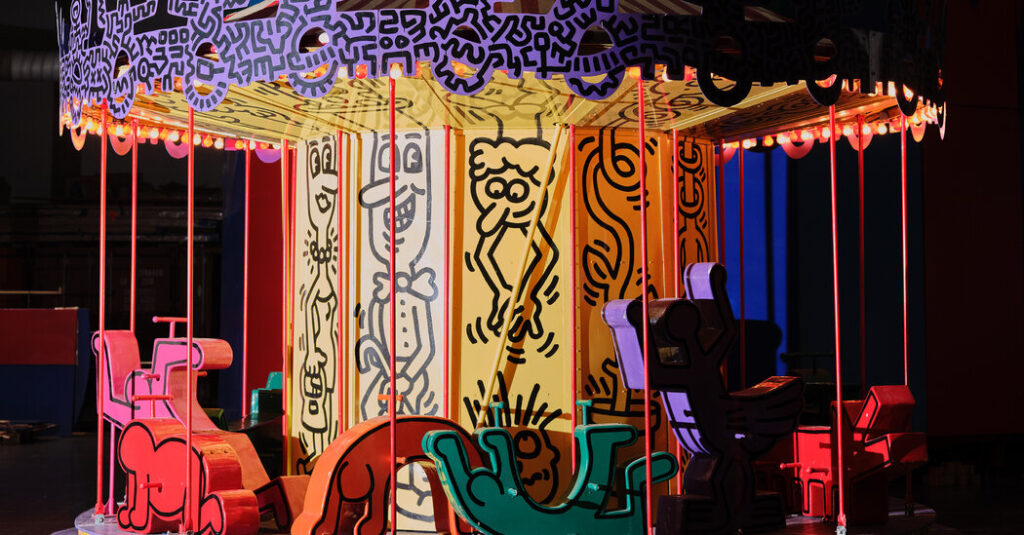
“It just felt like something I should have known about,” Goldberg, whose Something Special Studios has worked with Nike and the Brooklyn Museum, said in an interview. But when he began texting his most plugged-in contacts — art advisers, collectors, “kids who know what’s up” — nobody knew what he was talking about. “OK, this is really starting to become interesting,” he thought.
Experienced in the world of New York nightlife and entertainment events but with no obvious inroads to the project, Goldberg let his imagination lead, prematurely plotting ways to resurrect the Luna Luna brand. As a Hail Mary, he sent a series of cold emails to Heller’s studio.
What Goldberg didn’t know at the time was that Heller had recently been pulled back down the same path. Encouraged by the art historian Dieter Buchhart, a Basquiat scholar, Heller and the lawyer Daniel McClean, who specialized in art restitution, were already exploring ways to liberate Luna Luna.
“Andre was like the poison and the cure,” McClean said. “This was sold by him, but he also had to be part of any purchaser that bought it back, because he has the know-how and the relationship with the artists.”
A billionaire collector looked into funding the deal, but the sellers insisted that the works be bought as-is, sight unseen, cooling interest. “We had a very apocalyptic view of what the contents of the containers would be,” McClean said. Upon being granted a limited inspection of one in 2018, he was greeted by water sloshing out.
It was Goldberg, clinging to hope that he could get involved somehow, who planted the seed with Drake’s DreamCrew. “Within a 30-second conversation of ‘this existed,’ we were all in,” Gonzales said of taking it to the rapper and his manager Adel Nur, who is known as Future the Prince. “‘How do we get involved?’”
You may also like
-
A Cockney Rosebud: New Bittersweet and Poignant Memoir Captivates with Tale of Early 20th Century East End Family Life
-
Norse Organics Have Been Able To Scale The Production of The Kill Acne & Redness Ritual To Match The Demand In The Market
-
Unlocking the Benefits: Buy Cat Litter Online
-
Capturing Stories, Connecting Worlds: The Journey of Cade Chudy and 4th Shore Productions
-
The Multidimensional Universe: A New Theory Unfolds

